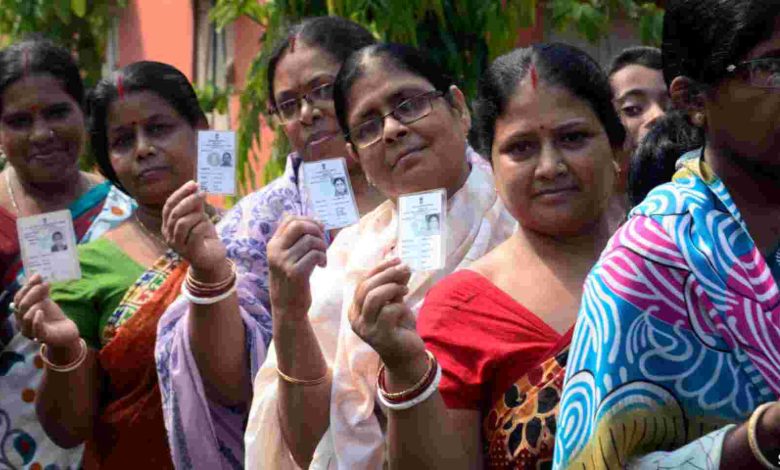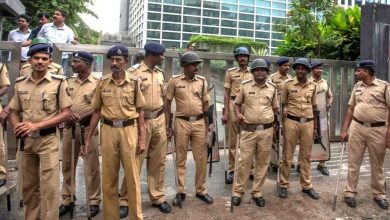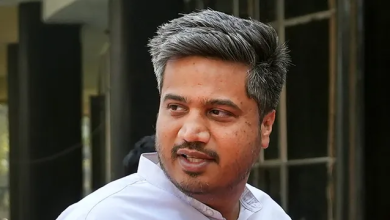The Rise of Female Voters in Maharashtra Lok Sabha Elections

The Power of Women in Democracy
Women Voters Maharashtra Lok Sabha Elections: In the upcoming Lok Sabha elections in Maharashtra, women voters are poised to wield significant influence over the electoral outcome. Over the past two decades, there has been a notable surge in the number of women participating in the electoral process, particularly in constituencies like Ramtek, which have witnessed remarkable growth in female voter registration.
Ramtek Leads the Way: A Remarkable Increase in Women Voters
Ramtek, a key constituency in Vidarbha, has witnessed an astonishing 84.83% increase in women voters from 2004 to 2024, the highest among all Lok Sabha constituencies in the region. In 2004, Ramtek recorded 5,42,529 registered women voters compared to 6,06,230 men. Fast forward to 2024, and the number of registered women voters has surged to 10,02,780, with men reaching 10,43,601. This substantial increase in female voter registration surpasses the rise in male voters over the past two decades.
Contrasting Trends: Nagpur’s Experience
In contrast to Ramtek’s impressive growth, Nagpur has experienced a more modest increase in women voters, standing at 42.17% over the same period. While Nagpur had 7,79,123 women voters in 2004, the number rose to 11,07,724 in the 2024 Lok Sabha polls. Similarly, men voters increased from 8,51,771 to 11,11,298 during this time frame.
National Trends: A Shift in Gender Dynamics
The rise in women voters is not limited to Maharashtra alone. Nationwide, there has been a steady increase in female participation in the electoral process. According to census data, the proportion of women in the electoral roll has shown improvement, with 923 women for every 1000 men in 2024, compared to 889 in 2014. This signifies a positive trend towards gender parity in political participation.
Challenges and Initiatives: Encouraging Women’s Participation
Despite the surge in registration, there remains a disparity in voter turnout between men and women. In both Ramtek and Nagpur, a higher percentage of men exercise their voting rights compared to women. To address this imbalance, the government has launched the Systematic Voters Education and Electoral Participation (SVEEP) campaign, enlisting the support of various community groups and organizations to promote women’s voter registration.
Furthermore, efforts are underway to encourage women’s participation through influential figures in various fields such as industry, education, and culture. By leveraging the influence of these leaders, the aim is to empower more women to exercise their democratic rights.
Harnessing the Power of Women in Democracy
As we approach the Lok Sabha elections, it is evident that women will play a pivotal role in shaping the political landscape of Maharashtra. The surge in female voter registration signifies a positive shift towards inclusive democracy. However, concerted efforts are needed to ensure that this increase translates into meaningful participation at the polls. By addressing barriers and amplifying women’s voices, we can harness the full potential of women in democracy.
FAQs (Frequently Asked Questions)
1. Why is there a significant increase in women voters in Maharashtra?
- The increase in women voters reflects a broader trend towards greater gender inclusion in the electoral process, driven by awareness campaigns and grassroots mobilization efforts.
2. What challenges do women face in exercising their voting rights?
- Women may encounter various barriers such as lack of awareness, social norms, and logistical constraints, which can hinder their participation in elections.
3. How can communities support women’s voter registration?
- Communities can play a crucial role by providing education, resources, and support networks to empower women and encourage their participation in the electoral process.
4. What role do influential figures play in promoting women’s participation?
- Influential leaders in different sectors can inspire and mobilize women to engage in civic activities, including voter registration and turnout.
5. What measures are being taken to address the gender gap in voter turnout?
- Initiatives such as the SVEEP campaign aim to address barriers and increase women’s participation through targeted outreach and community engagement.









